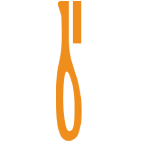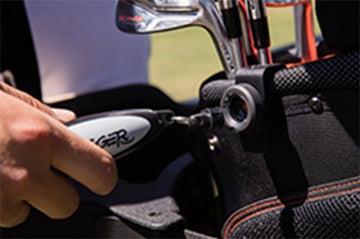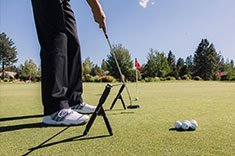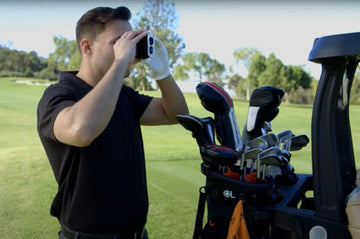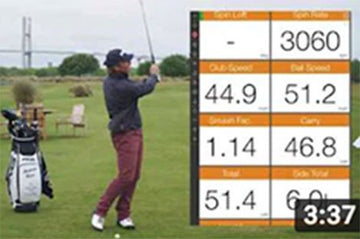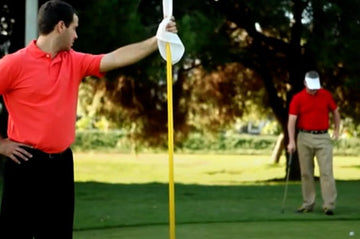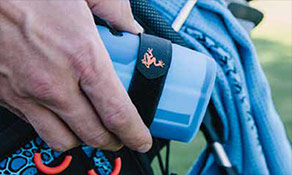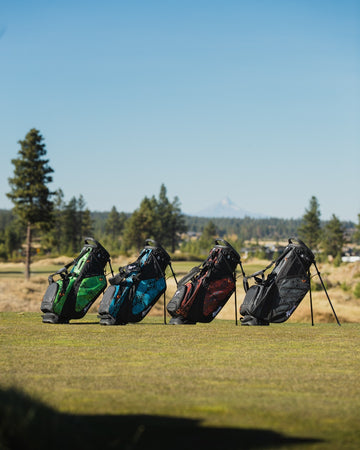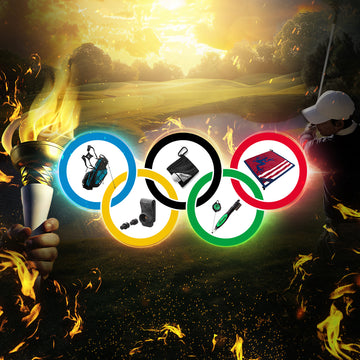Golf Tips: Unplayable Lie
by
Jeremiah Bohannon
on
Aug 13, 2012

This past weekend during the 3rd round the PGA Championship, Rory McIlory hit a towering 3-wood on a par-4. In a bizarre event, the ball flew into a branch of a dead tree and embedded. It never bounced or left the branch. After some searching, McIlory reached into the tree branch above his head and found his ball (picture). So what now?
Unplayable Lie
McIlory could not hit the ball so he declared his ball "unplayable." A player can declare a ball unplayable anywhere on the course except in a water hazard, even a bunker. Once declared unplayable there are several options, under penalty of one stroke.
- Play the shot from the previous location (in Rory's case, from the tee)
- Drop the ball behind the point where the ball was declared unplayable, in line with the hole. This is what McIlory chose to do.
- Drop the ball within two club lengths of the unplayable lie, no nearer the hole.
- If in a bunker, the player may hit from the previous location or drop in the bunker under the 2nd two rules above.
- The ball may be cleaned.
McIlory chose the 2nd option above, going back in a straight line as far as he wanted, drawing that line from the hole to the unplayable lie. He moved back far enough for a perfectly comfortable wedge and was then hitting his 3rd shot. First shot was the tee shot, 2nd shot was the unplayable lie penalty, 3rd shot was the wedge. He knocked the ball to about eight feet and made the putt for par. Having found the ball was a big deal for McIlory. Had he not found the ball, he would have had to go back to the tee where he would be then hitting his 3rd shot after a lost ball penalty. He would have had to birdie the hole on his 2nd ball just to make bogey and in all likelihood would have made a double bogey. At that point in the tournament a double bogey could have derailed his hopes for winning. We all know what happened though, he went on to blow the field away by eight shots. Knowing the rules and taking best advantage of them, helped Rory save par and keep his momentum going.
It is important to note that the ball must be found to be declared unplayable. Otherwise it is a lost ball.
Below is the United States Golf Association's definition and options for the unplayable lie:
Definitions
All defined terms are in italics and are listed alphabetically in the Definitions section.
The player may deem his ball unplayable at any place on the course, except when the ball is in a water hazard. The player is the sole judge as to whether his ball is unplayable.
If the player deems his ball to be unplayable, he must, under penalty of one stroke:
a. Proceed under the stroke and distance provision of Rule 27-1 by playing a ball as nearly as possible at the spot from which the original ball was last played (see Rule 20-5); or
b. Drop a ball behind the point where the ball lay, keeping that point directly between the hole and the spot on which the ball is dropped, with no limit to how far behind that point the ball may be dropped; or
c. Drop a ball within two club-lengths of the spot where the ball lay, but not nearer the hole.
If the unplayable ball is in a bunker, the player may proceed under Clause a, b or c. If he elects to proceed under Clause b or c, a ball must be dropped in the bunker.
When proceeding under this Rule, the player may lift and clean his ball or substitute a ball.
 This past weekend during the 3rd round the PGA Championship, Rory McIlory hit a towering 3-wood on a par-4. In a bizarre event, the ball flew into a branch of a dead tree and embedded. It never bounced or left the branch. After some searching, McIlory reached into the tree branch above his head and found his ball (picture). So what now?
Unplayable Lie
McIlory could not hit the ball so he declared his ball "unplayable." A player can declare a ball unplayable anywhere on the course except in a water hazard, even a bunker. Once declared unplayable there are several options, under penalty of one stroke.
This past weekend during the 3rd round the PGA Championship, Rory McIlory hit a towering 3-wood on a par-4. In a bizarre event, the ball flew into a branch of a dead tree and embedded. It never bounced or left the branch. After some searching, McIlory reached into the tree branch above his head and found his ball (picture). So what now?
Unplayable Lie
McIlory could not hit the ball so he declared his ball "unplayable." A player can declare a ball unplayable anywhere on the course except in a water hazard, even a bunker. Once declared unplayable there are several options, under penalty of one stroke.



